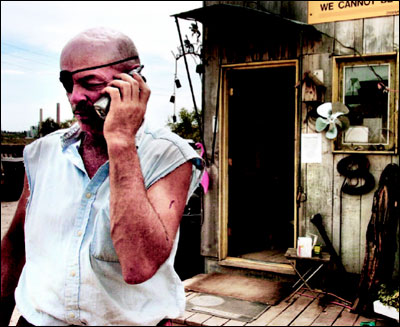 Yesterday, I blogged about SunChips’ smart marketing use of its green message on its packaging and on its website. This morning, I began reading some of the informational PDFs I downloaded from its website about those environmental initiatives. I was intrigued about the company’s use of a new corn-based biopolymer being used take 30% of its current packaging compostable—and growing.
Yesterday, I blogged about SunChips’ smart marketing use of its green message on its packaging and on its website. This morning, I began reading some of the informational PDFs I downloaded from its website about those environmental initiatives. I was intrigued about the company’s use of a new corn-based biopolymer being used take 30% of its current packaging compostable—and growing.
To make its packages partly compostable, SunChips is using a polymer produced by NatureWorks LLC. Polylactic acid (PLA), or polylactide, is made from plant starch. More specifically, PLA is made from lactic acid, which is made from dextrose by fermentation, and dextrose is made from plant starch. In case the order is important.
What is important is that the polymer is made from renewable plants rather than petroleum, so it makes a lower impact on greenhouse gases. NatureWorks has trademarked this material with the name Ingeo, which is calls the world’s first and only performance plastic made from 100% annually renewable resources.
I just love that SunChips is using renewable resources for its packaging, and I hope that other companies follow suit in droves. The challenge for SunChips (and other large manufacturers working with small, innovative upstarts) is that NatureWorks LLC is a small company that is unable, at this time, to produce the kind of volumes necessary to supply the full demand that SunChips actually needs. But if the demand exists, the volume will follow.
As great as its environmental initiatives are, it’s also important to read between the lines about what is not being said. On its website, SunChips talks about creating a compostable package, but if you read closely, the packaging is not currently compostable. That is the company’s goal. But currently, the packaging is only 33% compostable. Big difference.
Food packaging like chip bags is made from three layers — the outer, printed film layer, the inner barrier to provide moisture- and other product protection, and the adhesive that holds them together. Once a compostable layer is adhered to a noncompostable layer, the entire package becomes noncompostable. Only once the company accomplishes its goal of getting all three layers compostable will the full benefits be felt.
In the meantime, there are a lot of great things happening here, even if compostability of the package itself isn’t one of them right now. One-third of the film from SunChips’ bags is from renewable resources; a portion of its energy for production is coming from solar power; and the company is actively working toward full compostability, which based on its current environmental commitment is likely to happen sooner rather than later.
Another source of good news is that SunChips is a Frito Lay company, so success here is likely to drive even broader environmental initiatives across the packaging giant—and Frito Lay, as a leader in the packaging community, is the role model that others follow.
Like this post? View all my “Greening Print Marketing” posts.



I dislike the new packaging of Sun Chips. It’s horribly noisy !! Do SOMETHING about it. Can even talk to anyone while getting into the package!
I dislike the new packaging of Sun Chips. It’s horribly noisy !! Do SOMETHING about it. Can even talk to anyone while getting into the package!
It is now….100% Compostable and we did it.
I just saw this myself on a television ad, I think. I’ll definitely get this angle covered in The Inspired Economist shortly. Thanks for the reminder!
It is now….100% Compostable and we did it.
I just saw this myself on a television ad, I think. I’ll definitely get this angle covered in The Inspired Economist shortly. Thanks for the reminder!
Mar-Take your pick, a noisy package due for being created from plants or a quiet package made out of oil….you do have a choice.
We have spent 2 1/2 years developing this and we did of course notice the “noisy” effect but at the end chose to go the right way.
If consumers choose packaging made from Oil and Gas, so be it but we are bent in making a difference as responsible Flexible Packaging manufacturers.
Mar-Take your pick, a noisy package due for being created from plants or a quiet package made out of oil….you do have a choice.
We have spent 2 1/2 years developing this and we did of course notice the “noisy” effect but at the end chose to go the right way.
If consumers choose packaging made from Oil and Gas, so be it but we are bent in making a difference as responsible Flexible Packaging manufacturers.